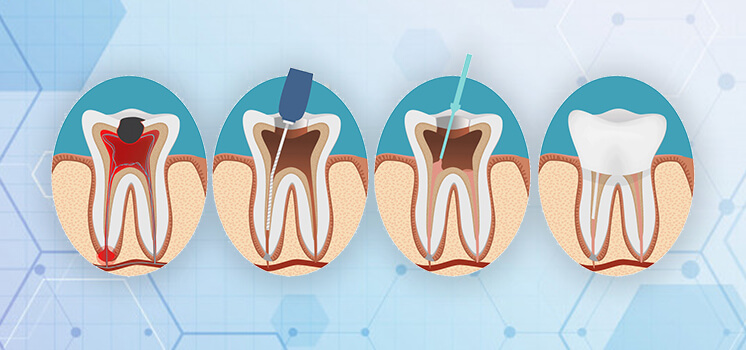Endodontic Dentistry

Endodontics encompasses the study (practice) of the basic and clinical sciences of normal dental pulp, the etiology, diagnosis, prevention, and treatment of diseases and injuries of the dental pulp along with associated periradicular conditions. Endodontics has evolved tremendously in the past decade and its applications have immensely improved the quality of dental treatment.
In clinical terms, endodontics involves either preserving part, or all of the dental pulp in health, or removing all of the pulp in irreversible disease. This includes teeth with irreversibly inflamed and infected pulpal tissue. Not only does endodontics involve treatment when a dental pulp is present, but also includes preserving teeth which have failed to respond to non-surgical endodontic treatment, or for teeth that have developed new lesions, e.g., when root canal re-treatment is required, or periradicular surgery.
The main purpose of endodontic treatment (root canal therapy) is to remove the diseased pulp, clean and shape the root canal system, disinfect the contaminated root canals, and then obturate (fill) the root canal system to prevent re-infection and promote periradicular healing. The aim is to have radiographic evidence of healing, with no postoperative lesions present, and restored periradicular health if preoperative lesions were present. The main reason for dental pulpal problems has been related to bacterial contamination of the root canals. Therefore, significantly reducing the bacterial load within the root canal system, and then filling the canals with an inert obturating material aid in preventing bacterial re-infection (see Gutta-percha#Dentistry).
Endodontic therapy is not only performed when pain relief from an infected or inflamed pulp is required. It is also done to prevent adverse signs and symptoms from the surrounding sequelae and promote the healing and repair of the surrounding periradicular tissues. An example of which is if there is trauma to a front tooth which has caused it to be avulsed from the bony socket; endodontic treatment is required following re-implantation to preserve the aesthetics and function of the tooth, even though there may be no adverse symptoms of the dental pulp, or pain present at the time.
Endodontists are specialist dentists with additional training, experience and formal qualifications in endodontic treatment, apicectomies, microsurgery, and dental emergency and trauma management. The use of magnification devices such as microscopes, and dental loupes have been widely accepted among endodontists and practitioners.
Its use is believed to increase accuracy and visualization in the operating field,[8] however, a Cochrane review in 2015 found no evidence to determine whether there's a difference in the outcome of a procedure done by magnification devices or a conventional procedure done with no magnification.[9] Endodontic treatment is one of the most common procedures. If the dental pulp (containing nerves, arterioles, venules, lymphatic tissue, and fibrous tissue) becomes diseased or injured, endodontic treatment is required to save the tooth.[10] Endodontics is recognized as a specialty by many national dental organizations including the Dental Board of Australia, British General Dental Council, American Dental Association, Royal College of Dentists of Canada, Indian Dental Association, and Royal Australasian College of Dental Surgeons.
Dental Specialties


